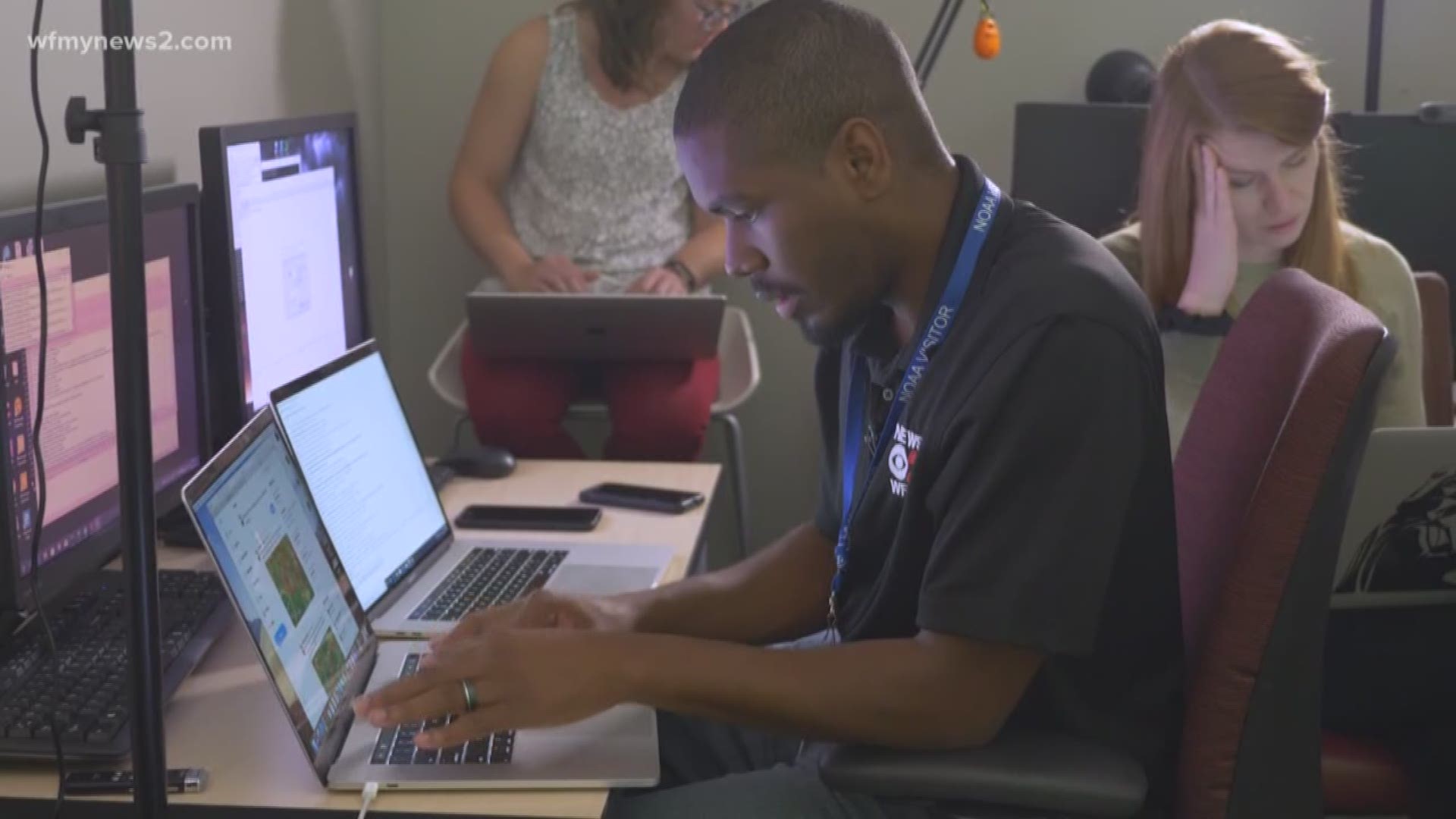When it comes to severe weather, issuing accurate, specific warnings that convince people to take action to protect themselves and their family is the ultimate goal of meteorologists. The way that severe weather warnings are issued and shared with the public hasn’t changed much over the past several decades. There are a group of researchers at the National Severe Storms Laboratory working to change that for the better.
The Probabilistic Hazard Information (PHI) research project in NOAA’s Hazardous Weather Testbed (HWT), is working to develop new severe weather warnings that better communicate the severe threat to the public. I had the pleasure of spending a week in Norman, Oklahoma at the HWT participating in that research project.
Right now, with tornado or severe thunderstorm warnings, the only information you get is start/end time and whether or not you’re in the warning. What PHI will attempt to do is to give you extra information about your risk from a storm, by creating a risk based percentage plume that will be updated regularly as a storm moves along. For example, a storm may go from having an 80% chance of producing a tornado, to a 100% chance, back down to a 50% chance over a given amount of time. That information, along with frequent probability updates will help broadcast meteorologists be on the same page as the NWS meteorologists who actually issue the warnings. Additionally, it’ll allow for smaller, more precise, warnings with the intention to lower the false alarm rate.
My role in the research project was to work in a simulated television station setting, named KPHI, performing my typical job duties while using experimental weather information and severe warnings. Researchers want to see how broadcast meteorologists may use this information to decide when to run crawls, cut into programming, and how we may communicate these new warnings to our viewers.
This new warning system is still in its early development phase, so don’t look to see it anytime soon on your TV. The team of researchers at the National Severe Storms Laboratory are working hard to develop the system, and make sure it can be applied in the most effective way. Whenever it becomes operational, scientists believe it will be a big leap forward over the severe warning system currently in use.

